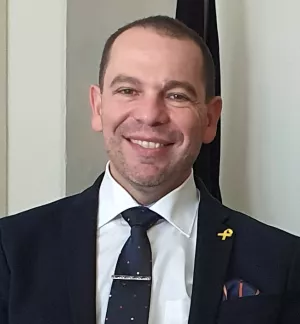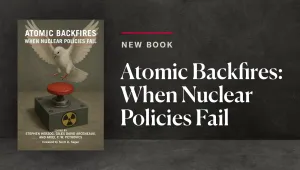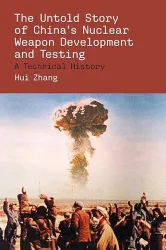BOTTOM LINES
- More than 10 countries in the world operate research reactors fueled with highly enriched uranium (HEU) or use HEU targets to produce medical isotopes. These reactors and the fuel they store on site pose significant safety and security risks.
- Scores of additional HEU-fueled research reactors around the world are used to generate neutrons for research.
- A new generation of radiofrequency (RF) linear accelerators, relying on new technologies, may offer a substitute for nuclear research reactors for medical isotope production and for many research purposes. Expanding the use of accelerators for these purposes could help to reduce the use of HEU.
- Countries considering the acquisition of new research reactors for medical isotope production and as neutron sources for research could be provided with these capabilities by using an accelerator instead, reducing proliferation, security, and safety risks, and the generation of nuclear waste. However, non-HEU targets still need to be fully developed (as they do for research reactors) and a long process of regulation and licensing will be required.
NUCLEAR REASERCH REACTORS
Nuclear research reactors are used in many countries for many different purposes. Most of the reactors are used for research (mainly in physics), training for nuclear operators and engineers, materials testing in radiation conditions, or the production of radioisotopes for medicine and industry. Some countries, like Iran, are building new reactors ostensibly to fill these needs. Many of these reactors operate with highly enriched uranium (HEU) nuclear fuel — in most cases, enriched to around 90 percent, the same as fuel for nuclear weapons. The production and fabrication of HEU fuel, and the handling, transport, and storage of both fresh and spent fuel containing HEU entails considerable proliferation, security, and safety risks as well as very high costs. The global stockpile of highly enriched uranium was about 1500 tons in 2012, which was enough for more than 60,000 simple, first generation implosion weapons. About 98 percent of this material is held by the nuclear weapon states, with the largest HEU stockpiles in Russia and the United States.
HEU is an ideal target for terrorists seeking to build a nuclear weapon. Yukiya Amano, the head of the International Atomic Energy Agency, warned in October 2012 that terrorist groups were becoming more skilled in getting the know-how needed to acquire weapons-usable nuclear material. Thus, continued effort is needed in order to reduce, secure, and consolidate stocks of HEU.
The United States has put in place various programs and initiatives to convert HEU-fueled reactors to the use of low enriched uranium (LEU), particularly the Global Threat Reduction Initiative (GTRI), with the goal of minimizing the amount of nuclear material available that could be used for nuclear weapons by securing, removing, relocating, or disposing of relevant materials and equipment. These programs and others have enjoyed success converting reactors and removing HEU, for example in Chile, Libya, Portugal, Austria, Mexico, and Romania.
PRODUCTION OF MEDICAL ISOTOPES
Every year, medical professionals worldwide carry out more than 30 million procedures using medical isotopes; over half of these occur in the United States. Technetium-99m (99mTc) is used in approximately 85 percent of nuclear medicine diagnostic imaging procedures worldwide. Almost all the 99mTc used for this purpose is obtained from the radioactive decay of molybdenum-99 (99Mo). Molybdenum-99 is produced primarily by processing irradiated uranium targets (mainly HEU), in research reactors (mostly fueled with HEU). After irradiation in the reactor, the target is digested in acid or alkaline solutions and 99Mo is recovered through a series of separation and purification steps. The residual enriched uranium still needs to be treated, recycled, or stored properly.
Recently, the major producers of 99Mo have committed to shifting to producing this material without HEU over the next few years. But even research reactors using LEU for fuel and targets can pose important proliferation risks. Iran, for example, is justifying its production of 20 percent enriched uranium (which could rapidly be enriched to 90 percent for use in a bomb) as fuel for its aging LEU-fueled research reactor. Iran is building a new reactor at Arak that is well-suited for plutonium production, but is described as being needed to produce medical isotopes. Non-reactor alternatives could reduce the risk of countries using research reactors as excuses to build up capabilities useful for nuclear weapons programs.
Demographic and medical trends suggest that, in the near future, global demand for 99mTc will grow at an average annual rate of 3–8 percent as diagnostic imaging procedures expand to new markets, such as those in Asia. However, the research reactors used to produce 99Mo, are aging — most of the world’s supply of 99Mo is produced in reactors that are over 40 years old. Planned and unplanned shutdowns at some of these reactors have resulted in several recent 99Mo and 99mTc supply interruptions.
Because of these problems, international organizations and several government agencies have increased efforts to find both short- and long-term solutions to radioisotopes supply. The U.S. National Nuclear Security Administration accelerated its nuclear security efforts and adopted a two-track strategy for Mo-99 production. The first track is helping to finance the research and development of four domestic private industry Mo-99 projects to promote the development of sufficient HEU-free indigenous production to supply the U.S. market by 2016. The second track aims to boost foreign HEU-free Mo-99 production and to promote the goal of eliminating HEU-based Mo-99 production through cooperation with international organizations and high-level diplomatic meetings, such as the Nuclear Security Summit. Recently, Congress passed legislation mandating a halt to all U.S. exports of HEU for isotope production by 2020, unless sufficient non-HEU supply is not available by then.
The IAEA convened a group of experts to initiate a new activity specifically aimed at supporting global efforts to improve the reliability of 99Mo and 99mTc supply and at promoting the conversion of 99Mo production from HEU to LEU. The IAEA’s focus on the conversion of 99Mo production from HEU to LEU is part of a long-standing effort to eliminate HEU use in civilian applications. This effort received a boost in 2009 when the U.S. National Academy of Sciences concluded that the elimination of HEU in medical isotope production is technically and economically feasible.
The main technical issue is the obvious fact that LEU targets contain less U-235 compared to the HEU targets currently being used. Since 99Mo is a fission product of irradiated U-235 targets, the product yield decreases from a target with less U-235. Two ways to compensate for this are to increase the density of total uranium in the targets and to increase the number of targets irradiated. The first method is a source of much current research, as is the development of new technologies and targets that will increase yields. The latter method may affect other missions within the research reactors or may require more irradiation positions within the reactor.
Unfortunately, at this time, there is not yet an established body of knowledge to assess the best alternatives for the production and supply of radioisotopes without HEU. Also unknown are the expected costs, the comparative yield, the waste management requirements and costs, and the related economic impacts that would be encountered by a major 99Mo producer wishing to undertake conversion.
The reliability of 99Mo and 99mTc supply can be improved by increasing diversity and redundancy in all aspects of the supply chain. Smaller scale production (for domestic and regional use) as well as diverse distribution of production facilities would increase supply reliability. Construction of new research reactors or conversion of old ones is not necessarily the only solution. Several alternative and supplementary technologies for producing 99Mo and 99mTc have been proposed, although some of them are not yet commercially proven and others are still in the early stages of development. Linear accelerators are emerging as a potential substitute for nuclear research reactors, for both medical isotope production and generating neutrons for research.
THE ACCELERATOR ALTERNATIVE
A Linear Accelerator (LINAC) is an electron, a proton, or a heavy-ion accelerator in which the path of the particle accelerated in essentially a straight line. A cyclotron is an accelerator that sends the particles in a circle. Either type of accelerator could potentially be used for isotope production.
Israel is leading the way. In planning a future substitution of the 55-year-old, 5MW research reactor at the Soreq Nuclear Research Center, Israel initiated the Soreq Applied Research Accelerator Facility (SARAF) project a few years ago. Among the three common types of accelerators (DC Van-de-Graff linear accelerator, Cyclotron, and radio frequency [RF] linear accelerator), an RF LINAC is the most suitable accelerator type for Israel’s current requirements because it maintains high beam quality, enabling hands-on maintenance.
The accelerator is designed to accelerate protons, deuterons, and H2+ molecular ions to an energy of up to 40 MeV (corresponding to one third the speed of light for protons) and a beam intensity of up to 2 mA (1016 particles/sec).The beam is then directed to one of several targets in order to produce radioisotopes or an intense flux of neutrons for research. Consequently, the target is located in a heavily shielded room.
High current (2–5 mA) and low energy (about 40 Mev) proton/deuteron accelerators can feasibly produce most types of medical isotopes and can be used for tests and experiments for research in physics. Additionally, there are no proliferation risks since it is impossible to produce significant amount of fissile materials in an accelerator with this capacity.1
The accelerator cost will depend on the RF system cost, the length of the structure, and the power and operating costs. But, according to the suggested operational parameters above, accelerator production of isotopes has the potential to be cheaper than reactor production, and at the very least, will not prove prohibitively expensive. Moreover, the amount of nuclear waste from this type of accelerator is dramatically reduced since there is no reactor fuel, only targets for the isotope production. However, since non-HEU targets still need to be fully developed (as they do for research reactors), a long process of regulation and licensing is still ahead.
CONCLUSION
Accelerators can eventually be substituted for nuclear research reactors for the production of medical isotopes and for neutron-based research and other applications. As of today, linear accelerators for these purposes are still in the R&D phase, but their feasibility has been demonstrated. Proliferation risks from potential production of fissile materials like U-235 or U-233 and Pu-239 can be avoided by designing accelerators within specific parameters. In the near future, the demand for medical isotopes and reactors to produce them could be answered by providing them with an accelerator. Ultimately, accelerators could substitute for all or most of the world’s medical isotope production reactors and provide most of the neutrons needed for research.
The use of accelerators would reduce dependence on HEU and decrease the resulting risks. They would also eliminate the remaining risks posed by LEU research reactors. Nuclear waste would be reduced as well. Construction of accelerators for the production of medical isotopes could be cheaper compared to the costs of a new nuclear reactor. However, non-HEU targets still need to be fully developed.
The United States and other countries should work together to provide the funding and exchange of information and ideas needed to speed up the development, demonstration, and deployment of technically and economically viable accelerator technologies to substitute for research reactors.
1 In the past, the United States and other countries examined producing plutonium with very large accelerators.
RELATED RESOURCES
Bunn, M., & Harrell, E., Consolidation: Thwarting Nuclear Theft. Project on Managing the Atom, Belfer Center for Science and International Affairs, Harvard Kennedy School, Cambridge, Mass., March 2012.
Commission staff working document, “The supply of medical radioisotopes - An economic study of the 99Mo supply chain.” OECD ISBN 978-92-64-99149-1. NEA No. 6967, Brussels, 2010.
International Atomic Energy Agency, “Non-HEU Production Technologies for Molybdenum-99 and Technetium-99m,” IAEA Nuclear Energy Series (No. NF-T-5.4, 2013), Vienna, February 2013.
Updegraff, D., & Hoedl, S., “Nuclear medicine without nuclear reactors or uranium enrichment.” Center for Science, Technology, and Security Policy, American Association for the Advancement of Science, Washington D.C., June 2013.
ABOUT THE AUTHOR
David Nusbaum is an Associate and former Fellow of the Project on Managing the Atom and International Security Program. He has twenty years of professional experience as a chemical engineer in the nuclear industry. Throughout his career, he has tried to combine his technical background and broad knowledge in chemical and nuclear engineering with more practical, policy-oriented work such as the development of methods for enhancing safeguards in different kinds of nuclear facilities.
Statements and views expressed in this policy brief are solely those of the author and do not imply endorsement by Harvard University, the Harvard Kennedy School, or the Belfer Center for Science and International Affairs.
Nusbaum, David. “Smashing Atoms for Peace: Using Linear Accelerators to Produce Medical Isotopes without Highly Enriched Uranium.” Managing the Atom Project, Belfer Center, October 2013





